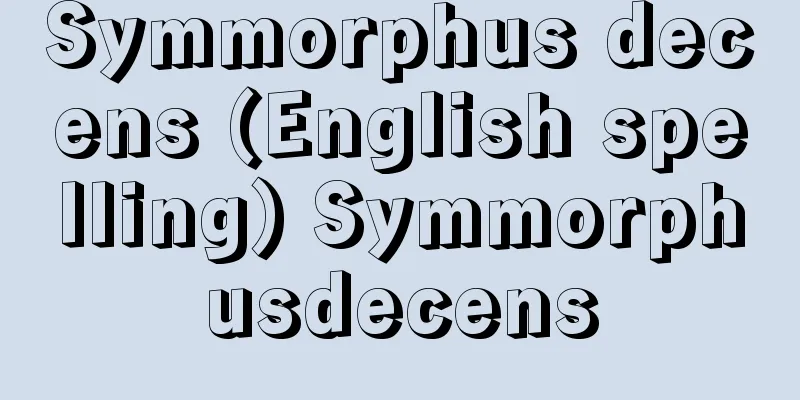Attendant - Zuijin

|
〘Noun〙 (also "zuishin")① From the Heian period onwards, officials of the Konoefu were appointed by imperial decree to guard when aristocrats went out. Carrying bows and arrows and strapping on swords, the Konoe were on foot while the others rode on horseback, with the vanguard being the leader of the guards . According to the "Koan Etessetsu," the number of officers was 14 in total for the retired emperor, two Shoso, Fusho and Bancho , and eight Konoe, while the regent and chancellor had two Fusho and Bancho, and six Konoe for a total of ten; eight for ministers and generals, six for councilors and councillors, four for chujo, two for shosho, four for Shohe, and two for Shohe. The retired emperor's attendants sometimes guarded the Imperial Palace at night. The attendants of Chujo, Shosho, Shohe and Shohe were also called kozuishin. Hyojo . Mizuijin (attendant) . ※Sandai Jitsuroku, April 14, 871 (the 13th year of the Jogan era), "The third prince, the official, the sword-carrying staff, the attendant soldiers, and other matters were all too much for the Emperor to handle, and there was no way to avoid them." ※The Tale of Ise (early 10th century), 78, "The Mizuijin sent his attendants to retrieve them." ② (━ suru) To be accompanied by an attendant. Also, the attendant. Attendant. ※Taiheiki (late 14th century), 18, "The only person he had in his service, a Mizuijin named Hata Takefumi , was brought to the capital to welcome him." [Han Shu, Kaozokuden, Cheng Zheng] ③ (━ suru) To wear something. To carry something. Also, the thing itself. Carry something. ※Ryo Gikai (718) Military Defense: "Above average marching soldier. If there is illness or death . A record of marching equipment and accompanying supplies. Also includes a return of a Hongo general." ※Heiji (around 1220) Part 2 : "When Yoritomo's lord was captured at Sekigahara, he accompanied him." ④ (━する) To live off a temple. To take refuge at a temple and take care of the temple duties and the personal needs of the head priest. Also, the person. ⑤ A statue of the same appearance as ① that is placed at the left and right gates of a shrine. Also known as Kadomori no Kami (gate guardian deity) or Kado no Osa (chief watchman) , and commonly known as Ya no Okami and Hidari no Okami. ※Miscellaneous Haiku, Yanagi Taru-161 (1838-40): "Two windmills on the attendant's temple temples." ⑥ Abbreviation of "Zuijinmon (attachment gate)." ※Miscellaneous Hai and Senryu Review Manku-go - Anei Roku (1777) Miyaichi "A girl comes out carrying a money box" ⑦ One of the Hina dolls displayed during the Girls' Festival. These dolls are modeled after the Minister of the Right and the Minister of the Left. 《Season・Spring》 ⑧ (━suru) To follow. ※Shomonki (940) "To chase the Chief Secretary and the Imperial Envoy and make them accompany you" Source: The Selected Edition of the Japanese Language Dictionary About the Selected Edition of the Japanese Language Dictionary Information |
|
〘名〙 (「ずいしん」とも)① 平安時代以降、貴人の外出の時、警衛のために、勅宣によってつけられた近衛府の官人。弓矢を持ち剣を帯び、近衛は徒歩、その他は騎馬で、前駆は番長(ばんちょう)がつとめた。「弘安礼節」によればその人数は、上皇には将曹(しょうそう)・府生(ふしょう)・番長各二人、近衛八人で総計一四人、摂政・関白には府生・番長各二人、近衛六人で総計一〇人というように、大臣・大将には八人、納言・参議には六人、中将には四人、少将には二人、諸衛督には四人、佐には二人である。上皇の随身は、夜間、御所の警衛にあたることもあった。また、中・少将、諸衛督・佐の随身を小随身ともいう。兵仗(ひょうじょう)。御随身(みずいじん)。※三代実録‐貞観一三年(871)四月一四日「年官准三宮、帯刀資人、随身兵仗等事、荷レ恩不レ力、衘瞻無レ間」※伊勢物語(10C前)七八「御ずいじん、舎人して取りにつかはす」② (━する) 供を引き連れること。また、その供の人。随従。※太平記(14C後)一八「只一人召仕しける右衛門府生秦武文と申随身(ズイジン)を御迎に京へ上せらる」 〔漢書‐貨殖伝・程鄭〕③ (━する) 物を身につけること。たずさえること。また、そのもの。携帯。※令義解(718)軍防「凡行軍兵士以上。若有二身病及死一者。行軍具録二随身資材一。付二本郷人一将還」※平治(1220頃か)下「頼朝の卿関が原にてとらはれ給ひし時、随身せられたりしかば」④ (━する) 寺に寄食すること。寺に身を寄せて寺務や住職の身のまわりの世話をすること。また、その者。⑤ 神社の左右の神門に安置する、①の姿をした像。門守神(かどもりのかみ)、看督長(かどのおさ)とも、俗に矢大神・左大神ともいう。※雑俳・柳多留‐一六一(1838‐40)「随身の小鬢(こびん)に二つ風車」⑥ 「ずいじんもん(随身門)」の略。※雑俳・川柳評万句合‐安永六(1777)宮一「銭ばこを持ちずいしんを娘出る」⑦ 桃の節供に飾る雛人形の一つ。右大臣、左大臣を模した雛。《季・春》⑧ (━する) つき従うこと。※将門記(940)「長官・詔使を追ひ立て、随身せしむる事」
出典 精選版 日本国語大辞典精選版 日本国語大辞典について 情報 |
Recommend
Kagutsuchi
The god of fire. Also known as Homusubi. In the Ko...
Chieko Higashiyama
Actress. Real name Kono Sen, maiden name Watanabe...
Cordylus cataphractus (English spelling)
… [Takahiro Matsui]. … *Some of the terminology t...
Supervisor - Kanto Kyuin
…When a petition is filed, the court will, if nec...
Medieval Music
Medieval European music. This covers music in West...
Yoshimine Temple
A Tendai sect temple located in Oharano Oshio-cho...
October List
The October Party was a constitutional monarchist ...
Autumn Palace - Akinomiya
In China, the Empress's palace Changqiu Palace...
Angular acceleration
…The magnitude of acceleration is measured in uni...
Saltation
...Materials transported by traction are called s...
Paeonia japonica (English spelling)
…[Hiroshi Aramata]. … *Some of the terminology th...
Colosseum (Latin)
An ancient Roman amphitheater remaining in Rome. ...
Fees - Yakuryo
The Edo Shogunate's official salary. In order...
Kamigata Dance
This is a unique type of Japanese dance that orig...
Parallel world
...Also, because the fourth-dimensional world is ...









